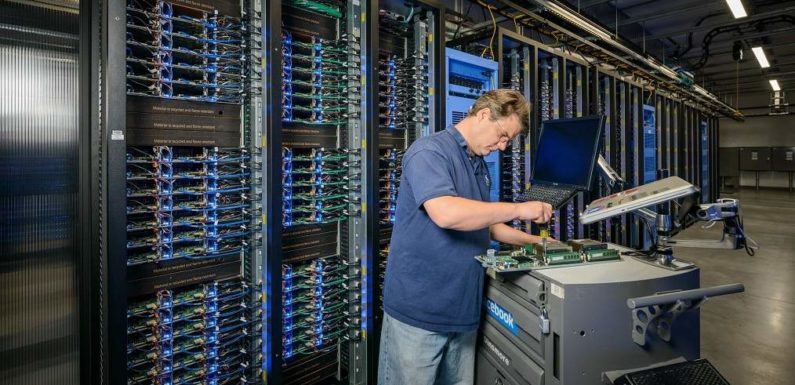
A data center is referred to as a physical facility that the organizations utilize to enclose their business-critical applications and information, so as they develop, it is very much important to think long-term about how to keep up with its reliability and security.
What are Data Center Components?
In actuality, data centers comprises of a number of technical elements like routers, switches, storage systems, servers and much more. These are the components which are required by the IT to store and manage the most critical systems that are quintessential for the continuous operations of the company. Just because of this, reliability, security, efficiency, and constant evolutions of a data center are primarily a top-notch priority.
What is Data Center Infrastructure?
Apart from the technical equipment, a data center also yearns for a substantial amount of facilities infrastructure so as to keep the hardware and software up and running. Data Center Infrastructure encircles the power subsystems, UPS, cooling systems, backup generators and also the cabling so as to connect with the external network operators.
Data Center Architecture
Any company of a considerable size will likely have various data centers possibly in various regions. Well, the data center architecture this provides the organization the flexibility in how it covers up its information and shields against natural and manmade disasters like floods, storms and the terrorist threats. Some of the key considerations include:
- Does your business require mirrored data centers?
- How much room do you need for expansion?
- What are the bandwidth and power requirements?
- What is the necessary time to recover in case of an outage?
Well answers to all the above questions can help you determine the number of data centers to build.
What is the Future of Data Center Technologies?
Like all the technological things, data centers are currently undergoing a significant transition, and the data center of tomorrow will look very different from the one most organizations are acquainted with.
Since the businesses are becoming dynamic and distributed, the technology powering data centers needs to be agile and saleable. With growing popularity of server virtualization, amount of traffic moving side by side across the data center has diminished traditional client-server traffic, which moves in and out.
Increased Popularity of Tier 3 Data Centers
The Tier 3 data centers offer a considerable jump in reliability and features from the lower tiered data centers. Let us see how!
What is a Tier 3 Data Center?
In order to better categorize different types of data centers, industry has segregated them into four different tiers. Going through all, the tier 1 systems are the least reliable and secure, while the Tier 4 systems are tremendously reliable and veritable fortresses of security. But what about the Tier 3 data center? The Tier 3 system falls somewhere short of the standards of Tier 4, but is still much more dependable and a secure solution than offered by the Tier 1 or even the Tier 2 systems.
Video Source – Youtube
So when you are looking for a top-notch and highly available colocation facility, dedicated server hosting infrastructure, platform or software as a service, prefer data centers that fulfill the Tier 3 requirements. According to the Uptime Institute, Tier 3 data center facility is designed to have more than 1.6 hours of unplanned downtime per year. This is a huge jump in accessibility from the lower tiers like 28.8 hours for Tier 1 and 22 hours for Tier 2, which makes the Tier 3 data centers very captivating for the new facilities.
What are the Features of a Tier 3 Data Center?
A tier 3 data center includes all the features of Tier 1 and Tier 2 data center, and requires no shutdowns for equipment replacement and maintenance. A tier 3 data center has N+1 redundancy, where N+1 means that the facility has what is required to operate plus a backup. Moreover, redundancy can include items like power feeds, UPS, diesel generators and UPS. Businesses utilize the Tier 3 data center facilities because of the following features:
- Marvelous 99.982% Uptime
- Downtime per year will not exceed 1.6 hours
- N+1 fault tolerant providing a minimum of 72 hours power outrage protection
- Keeps your data safe from unauthorized activities
- Power-packed arrangements in order to deal with undesirable causes like component failure and power fluctuations.
- Various equipment’s like the servers, telecommunication and networking devices are dual powered to cope up with the uncertain causes.
When we talk about the required effectiveness, efficiency and infrastructure, the Tier 3 data center is the more productive and cost-effective. Tier 1 and Tier 2 data centers are typically sufficient for businesses that can bear the occasional server downtime after regular business hours. But for those businesses that do not need 24/7 uptime, collocating or hosting in a Tier3 data center might involve extra investment that is not critical.

